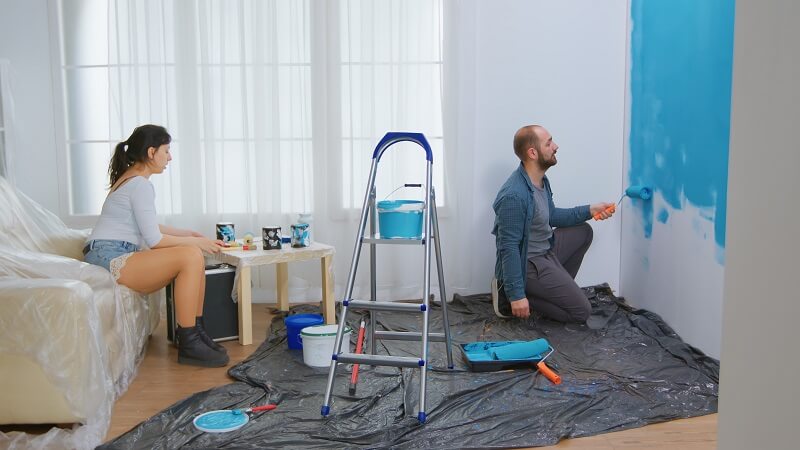Toronto’s varied climate brings with it a unique set of challenges for maintaining your home’s exterior. From the heavy snowfalls of winter to the intense summer sun, these changing conditions put your home’s paintwork to the test. Knowing when to repaint is not just about keeping things looking fresh—it’s about protecting your property from damage, preserving curb appeal, and even maintaining resale value.
In a city where appearances matter and weather extremes are real, homeowners often ask the same question: How often should I repaint my home’s exterior? The answer isn’t one-size-fits-all—but with the right insights, you can determine the ideal schedule for your home and avoid the costly consequences of waiting too long.
Let’s explore the key factors that influence repainting frequency in Toronto, signs to watch for, and best practices to extend the life of your exterior paint job.
Climate Conditions and Their Impact on Paint Longevity
Toronto’s four-season climate plays a major role in how often a home should be repainted. Freeze-thaw cycles, moisture buildup, UV exposure, and air pollution each wear down paint in different ways. Winters can cause cracking and peeling, while high humidity in summer months fosters mildew. These extremes mean that exterior paint typically doesn’t last as long in Toronto as it might in milder regions.
As a result, even the best quality paint job may need refreshing sooner than homeowners expect—especially if weatherproofing measures weren’t prioritized during the last application.
Type of Siding Material Matters
Different exterior materials require different maintenance intervals. Here’s a quick reference:
- Wood siding: Every 3–7 years depending on exposure, quality of paint, and whether it’s stained or painted.
- Aluminium siding: Generally every 5–10 years, although fading tends to occur before peeling.
- Stucco: Should be repainted every 6–10 years, as cracks and moisture absorption can shorten its durability.
- Fibre cement: Can last up to 10–15 years with high-quality paint, but edges and seams may require more frequent touch-ups.
- Brick (painted): Every 15–20 years, though regular inspection is still necessary.
If your home falls into the 3–10 year range, it may be time to start planning your next exterior painting Toronto project to maintain both aesthetics and protection.
Visual Signs It’s Time to Repaint
While timing is helpful, your home’s appearance often tells the real story. Look out for:
- Peeling or bubbling paint: This is a sign moisture has gotten behind the surface and is breaking down the bond.
- Cracks in the paint or substrate: These can allow water to seep in, leading to wood rot or mould.
- Fading colours: UV exposure slowly bleaches pigments, especially on south- and west-facing walls.
- Chalking: A white, powdery residue means the paint is oxidizing and breaking down.
- Exposed bare material: Any spot where paint has worn away completely needs urgent attention.
Catching these signs early can save you from more expensive repairs later, especially on older homes.
How Sunlight and Orientation Affect Wear
Toronto’s varied urban layouts mean that some homes receive much more sunlight than others. Walls facing south and west generally take more UV punishment, resulting in faster fading and deterioration. These surfaces may need repainting more often than the rest of the house—even if you’re using the same high-quality paint throughout.
If full-house painting isn’t yet necessary, targeted repainting of these sun-exposed sides can extend the life of your overall exterior.
Quality of Previous Paint Job
Not all paint jobs are created equal. If the previous work used low-grade paint or lacked proper surface preparation, the paint will fail faster—regardless of material or climate.
A quality job includes:
- Power washing or proper cleaning
- Scraping and sanding old paint
- Priming where needed
- Using exterior-specific, weather-resistant paint
If you’re unsure of the previous painter’s standards, a premature repaint might still be the smart move for long-term durability.
Maintenance Habits That Extend Time Between Repaints
Routine exterior maintenance can make a major difference in paint longevity. Here are a few simple practices:
- Clean annually with a hose or pressure washer to remove mildew, dirt, and pollution
- Trim back vegetation to reduce moisture and friction against the walls
- Inspect caulking around windows and doors and replace as needed
- Touch up damage promptly—small chips can grow into big problems if ignored
This kind of upkeep can easily add 2–3 years to the life of your paint, especially in high-traffic or high-moisture areas like porches and entryways.
Repainting for Curb Appeal and Property Value
While paint offers protection, it also significantly influences your home’s first impression. In a city like Toronto, where home values are high and competition is fierce, curb appeal matters.
A well-maintained exterior:
- Signals pride of ownership
- Increases your home’s perceived value
- Helps attract potential buyers or renters
Even if your current paint isn’t severely damaged, a refreshed colour or modern finish can transform your property’s look and align it with local design trends.
When in Doubt, Schedule a Professional Inspection
If you’re unsure about whether it’s time to repaint, consider having a painting professional inspect your home. They can assess the condition of your paint, the state of the siding, and environmental exposure factors—then provide an informed recommendation.
This is especially important if you’re planning renovations, preparing to list your property, or suspect hidden damage under existing paintwork.
Keep Your Home Protected Year After Year
Toronto’s climate demands more from exterior paint than many homeowners realise. While the average timeline for repainting varies from 5 to 10 years, depending on material and conditions, regular inspections and maintenance play a key role in determining when it’s truly time for a refresh.
By staying proactive—and responding to early signs of wear—you can preserve your home’s value, avoid expensive structural issues, and maintain an exterior that’s as beautiful as it is durable.

